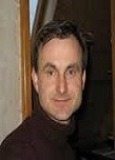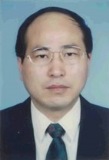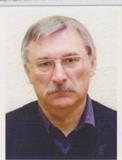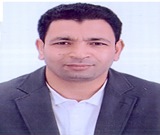Day 1 :
Keynote Forum
Russell R. Chianelli
University of Texas at El Paso, USA
Keynote: Catalytic materials from theory and synthesis to comercialization
Time : 10:05-10:30

Biography:
Russell R. Chianelli is currently Director of the Materials Research and Technology Institute at the University of Texas at El Paso and Professor of Chemistry, Materials and Environmental Science and Engineering. After receiving his PhD, he joined the Corporate Research Laboratories of Exxon Research and Engineering Co in 1974. While at this laboratory he conducted research in both fundamental and applied areas of interest to the energy industry. He is recognized worldwide for his work in Transition Metal Sulfide environmental catalytic materials. This work resulted in over 130 publications and 60 issued United States patents. During this period he was active in the Materials Research Society (MRS), serving as vice president (1989), president (1990), past president (1991) and Counselor (1992-1994). In 1996 he joined the Chemistry Department at the University of Texas at El Paso as Chairman and Professor of Chemistry and Environmental Sciences. In 2001 he resigned as Chemistry Department Chairman to head the Materials Research and Technology Institute (MRTI) at UTEP. The MRTI is dedicated to research relevant to the US/Mexico border in Materials related to energy, environment and health.
Abstract:
The recent development of commercial software able to determine or predict catalytic activity, has led to commercialization and potential commercialization of the TMS catalytic materials as described in reference 1. Additionally, we have developed a fundamental understanding of the catalytic materials as described in reference 2. This report will describe how the following interdisciplinary scheme has been applied to the TMS catalytic materials.rnrnShell Oil after WWII commercialized unsupported TMS catalytic materials but these were soon replaced for commercial reasons with the currently popular Al203 supported catalysts. In the 1970’s researchers concluded, incorrectly, that the Al203 was fundamentally involved in the “Promotion Effect”. This effect today is understood in detail as the sharing of non-bonding d electrons in clusters that mimic noble metal for example Co9S8 + MoS2. This result we call “Goldilocks” which will be discussed during the report.rnNew TMS catalysts are developed through theory, synthesis, characterization and then the use of model reactions. In our case we have used the HDS of dibenzothiophene as our model reaction and over the years it predicts accurately behavior in real petroleum feeds and rapidly screens catalysts for real feed tests. Behavior in real feeds is required to move closer to commercialization. In the case of the TMS we have three different exciting real feed results and our catalyst are being commercialized. Another commercial task is to scale-up from laboratory quantities (grams) to sale quantities (pounds – tons). New issues are often involved and commercialization requires teamwork.rnrnrn
Keynote Forum
Clifford A. Lipscomb
Greenfield Advisors LLC, USA
Keynote: The Impact of abandoned fracking sites on brownfield funding
Time : 10:30-10:55

Biography:
Clifford Lipscomb is the Director of Economic Research at Greenfield Advisors, a Chartered Valuation Surveyor, and has more than 18 years of experience in economic analysis, statistical analysis, consulting, and teaching. He holds baccalaureate degrees in Economics and Sociology from Berry College as well as a PhD in Public Policy from the Georgia Institute of Technology. He serves as an Associate Editor of the Journal of Real Estate Literature. Dr. Lipscomb won the 2014 International Association of Assessing Officers’ Bernard L. Barnard Outstanding Technical Essay Award. He is currently a Visiting Scholar at the Federal Reserve Bank of Atlanta.
Abstract:
When real estate researchers discuss brownfields, often former industrial sites (e.g. steel mills), automobile shops, salvage yards, dry cleaners, or illegal drug laboratories come to mind. Considering that the U.S. has approximately 1.1 million oil and gas wells and considering the current state of the “fracking boom”, the following question comes to mind: do abandoned fracking sites qualify as brownfields under the current definition? The traditional definition of a brownfield is real property that has potential or actual contamination issues that may cause reuse or redevelopment issues. After discussing this issue, the paper examines the trends in EPA and state brownfield funding for the redevelopment and reuse of abandoned fracking sites. With so many fracking wells being drilled, the potential demand for state and federal brownfield monies (i.e. grants) is expected to surpass potential funding supply in the coming decades.
- Track 1: Chemical Applications in Producing Oil & Gas
Track 2: Fuel Chemistry, Technology & Processing

Chair
Tereza Neuma de Castro Dantas
Federal University of Rio Grande do Norte, Brazil

Co-Chair
Antanas Juostas
Aleksandras Stulginskis University, Lithuania
Session Introduction
Zongxian Wang
China University of Petroleum, China
Title: Transformation of vanadyl porphyrins in heavy residue during thermal upgrading under hydrogen
Time : 11:10-11:30

Biography:
Zongxian Wang. He has completed his PhD from China University of Petroleum and postdoctoral studies from National Research Council of Canada (NRC). He is now the professor from China University of Petroleum (East China), and has published more than 60 papers in reputed journals.
Abstract:
Transformation of vanadyl porphyrins in the petroleum heavy residue during thermal upgrading under hydrogen was investigated. Effect of reaction time, hydrogen pressure and elemental sulfur on their transformation was also discussed. Vanadyl porphyrins were initially separated and purified from atmospheric residue of two typical heavy oils, Canadian oil sand bitumen (OSAR), and Chinese Liaohe heavy oil (LHAR) by silica gel chromatography. The obtained vanadyl porphyrins were thermally treated for various reaction times under different hydrogen pressures with or without sulfur. The structures of these vanadyl porphyrins before and after thermal process were characterized by positive-ion electrospray ionization (ESI) Fourier transform-ion cyclotron resonance spectrometry (FT-ICR MS). N4VO, N4VO2, and N4VOS were all identified as protonated analyte ([M+H]+). Transformation of these vanadyl porphyrins were probed by analyzing the DBE distribution and carbon number distribution. Results showed that the three vanadyl porphyrins species showed different transformation reactivities. Increase of hydrogen pressure and addition of sulfur could promote the hydrogenation of vanadyl porphyrins. This indicates that different thermal reaction conditions should be chosen for hydrogenation and demetallization of different vanadyl porphyrins.
Qincheng Bi
Xi’an Jiaotong University, China
Title: Pyrolytic and properties of endothermic fuels in minichannels at temperatures up to 750°C
Time : 11:30-11:50

Biography:
Prof. Qincheng Bi has completed his PhD at the year of 2000 from Hong Kong University of Science and Technology. He is now a professor in State Key Laboratory of Multiphase Flow in Power Enginnering in China. He has published more than 100 papers in reputed journals.
Abstract:
Endothermic fuel is used as a coolant in regeneratively cooled vehicles. The fuel pyrolysis should persist for relatively long periods in minichannels and cause no significant coke deposition. Experimental platform has been constructed to investigate the heat transfer characteristics, pyrolytic and coking characteristics, and thermal physical and chemical properties of endothermic hydrocarbon fuels. Different flow passage structures are involved in the range from single circular minichannels and two-parallel minichannels for fundmental researches, to multi-minichannel plates for industrial applications. The platform works at mass flow rate in a range of 0.1 mL/min to 100 g/s with a heating power capacity of 1.4 MW. The thermodynamic properties include heat sink, density and specific heat were experimentally measured at temperatures up to 750 ï‚°C. The transport propeties include viscosity and heat conductivity were measured at temperature up to 400 ï‚°C, but higher temperature up to 800 ï‚°C are expected to be realized effortfully in the future. The evaluation of deposition propensities of different endothermic fuels in minichannels were conducted at thermal cracking and catalytic cracking conditions in different flow passage structures. Flow maldistribution in parallel multi-channels was a significant problem to be solved to realize the full utilization of endothermic fuel’s cooling capacity. Overall, a large-scale experimental platform for the R&D of regeneratively cooling structures has been developed in our laboratory.
Antanas Juostas
Aleksandras Stulginskis University, Lithuania
Title: Tractor fuel consumption, exhaust emissions and their normative assessment during field application
Time : 11:50-12:10

Biography:
Antanas Juostas. Dr. Service Development Manager in Baltics, at Konekesko Lietuva company in Lithuania. Doctor of Science, 2012. Dr. Lector at Institute of Agricultural Engineering and Safety, Aleksandras Stulginskis University (ASU). Dissertation prepared in Institute of Power and Transport Machinery Engineering, Aleksandras Stulginskis University (ASU). Publications: author of 25 scientific publications. Research interests: tractors parameters from dynamic, ecological and economical point of view.
Abstract:
The paper gives an overview of possibilities to determine the values of tractor‘s fuel consumption and exhaust emissions in real operating conditions by using data accumulated in electronic control units. There is ecological and economic importance for the tractors to be operated correctly: time of engine idling, operation at low and too high loads or high speeds should be shortened. Fuel consumption and exhaust emissions, including harmful components, can be reduced only by rationally use of the tractors engine power and speed.To monitor tractor‘s operating performance, tools and techniques are necessary that would allow to determine the controlled indicators. Currently used emission control standards are suitable for testing all types of mobile machines, but the weighting factors are not applied for tractor performing agricultural applications. Today, no data are collected about fuel used, exhaust emissions and their interaction in the real agricultural and transport activities. Reasonable that it is practically impossible to create a weighting factor to suit various working machines for proper evaluation of the various terms and conditions. Studies has shown that the specific fuel consumption and exhaust emissions during field applications can’t be calculated without regard to the actual engine load and speed mode. As well, studies have found that the engine load, during typical field operations under different conditions, varies very much. For resolving the issue expected to substantiate the tractor engine fuel consumption and exhaust emissions monitoring instruments. For tractor fuel consumption and exhaust emissions evaluation, during tractor’s field application, the information collected in integrated digital microprocessors, applied for engine, transmission and other tractor systems operation and control, will be used. Expected, theoretically and experimentally justify microprocessor data use, fuel consumption, exhaust emissions and their interaction assessment methods and tools. The paper presents research of tractor‘s engine load factor during field application. The research is conducted on the base of data accumulated in engine‘s electronic control units. Histograms presenting show time intervals of the field processing, fuel consumption and emission components (CO2, NOx and CO) in various engine speed and cyclic fuel injection modes. Test results are analyzed separately for the processes of field process and work at headlands. Test results during field application showed that main amount of fuel was consumed and CO2 emitted during technological process and CO – during the work at headlands. Large quantities of NOx were emitted during technological processes and during the work at headlands as well. The research results will be compared with today’s valid exhaust emission standards applied for agricultural engines.
Xiaojun Bao
Fuzhou University, China
Title: Development and application of a fluid catalytic cracking gasoline hydro-upgrading process GARDES
Time : 12:10-12:30

Biography:
Xiaojun Bao obtained his PhD in 1990 in the Chinese Academy of Sciences. He is now professor and the dean of the College of Chemical Engineering, Fuzhou University. He has published more than 200 papers in reputed journals, owns more than 70 granted patents, and has been serving as an editorial board member of several journals such as Fuel Processing Technology, Chinese Journal of Chemical Engineering, Petroleum Science, and Journal of Coal Chemistry and Engineering.
Abstract:
More than 90% of sulfur-containing compounds and about 90% of olefins in typical refinery gasoline pools come from fluid catalytic cracking (FCC) gasoline, thus the sulfur and olefin reduction of this stream is crucial for producing clean gasoline. It has been widely recognized that hydrotreating is the most important technique for producing clean transportation fuels in industrial practice, but the existing techniques can hardly accomplish the objectives of both deep hydrodesulfurization (HDS) and olefin reduction of FCC gasoline with acceptable loss in gasoline research octane number (RON). To solve this problem, we developed a novel process, GARDES, by coupling high-efficient HDS and directed olefin conversion. First, the full-range FCC gasoline is pre-hydrogenated and then split into light and heavy cracked naphthas (LCN and HCN) through distillation, in which the LCN has a very low sulfur content and thus can be directly used for product blending and the HCN contains a relatively lower concentration of olefins but most ulfur-containing compounds; second, the HCN with high sulfur content is hydrotreated over a selective HDS catalyst with high desulfurization activity but low olefin saturation activity; third, the hydrodesulfurized HCN is further treated over an octane recovery catalyst to convert olefins into isoparaffins and aromatics with high RONs; finally, a clean gasoline blending component that meets both Euro IV and Euro V standards is obtained by mixing the resultant HCN and LCN. The GARDES process is featured by having ultradeep HDS, significant olefin reduction, and excelllent RON preservation abilities. Up to date, we have issued over 20 licenses to refineries and successfully erected 15 industrial units with a total annual processing capacity of more than 15 million tons.
Bushra Al-Duri
University of Birmingham, UK
Title: Supercritical water oxidation for the treatment of hazardous effluents
Time : 12:30-12:50

Biography:
Bushra Al Duri won a Research Grant Award of £750k from the EPSRC in Supercritical Coal Fired Power Plants, in collaboration with Electrical Engineering at Warwick University, Tsinghua University and NCEPU in China. Industrial partners are E-On UK Ltd., Emerson UK Ltd. and Scottish Powers. She is the lead Investigator in Chemical Engineering at Birmingham. She has recently returned from an EPSRC-supported UK-China Energy Conference in Beijing, where she represented the Project. Bushra completed 16 PhD [programmes and has over 90 publications in Wastewater Treatment, Reactions & Biocatalysis, and Supercritical Fluids. She also has on-going collaborations with international institutions, including University of Tokyo. Her future plans include expanding of the research in Energy and Environment; focusing on combining existing processes with supercritical water technology as the next generation of processes for waste minimisation and energy production, which complies with the increasing concerns over carbon emission and hence global warming. Bushra was appointed as MEGS Deputy Director at the beginning of April 2011.
Abstract:
This work presents supercritical Water Oxidation (SCWO) as the next generation of advanced processes for the treatment of hazardous compounds found in pharmaceutical, medical, laboratory and petrochemical effluents. SCWO is an advanced process based on the unique chemistry of water above its critical point (374.8°C and 25MPa). Unilike ambient water, SCW becomes miscible with all organics including stable hydrocarbons, polymers, biomass, as well as its miscibility with all gases. The reactions carried out in SCW are rapid (seconds to minutes), are highly efficient >99%, and produce no toxic emissions. This makes SCWO a strong contender to replace incineration for the destruction of non-biodegradable, chemically stable compounds found in effluents of the petrochemical industry. Furthermore, it shows great promise for the upgrading of heavy oils, production of hydrogen from biomass, to name a few applications. On a commercial scale SCWO passed through various challenges and is now on-route to the good. This work displays SCWO from fundamentals to commercialization, covering the existing concerns over the current prevailing treatment techniques and how SCWO offers advantages over such techniques. It reviews the chemistry of water and its relation to SCW behaviour, the kinetics of SCWO and SCWO reactor design. Further, it displays the main challenges, which face commercialization and the main existing SCWO commercial plants around the world.
Ashish Karn
University of Minnesota Twin Cities, USA
Title: A robust image analysis approach for high void fraction gas-liquid flows
Time : 13:35-13:55

Biography:
Ashish Karn is a PhD Candidate at the St. Anthony Falls Laboratory and Department of Mechanical Engineering, University of Minnesota Twin Cities (UMTC). He has done his bachelors and masters from Indian Institute of Technology Delhi and UMTC, respectively, both in Mechanical Engineering. He works in the area of multiphase flows, cavitation and supercavitation.
Abstract:
Bubbly flows occur frequently in natural systems and are also used for different applications in petroleum, energy-producing and chemical industries. The measurements of bubble size distribution are thus crucial in many applications in chemical engineering, viz. Hydrogenation of unsaturated oil, coal liquefaction, fermentation, waste water treatment, floatation cells, aeration studies, spargers etc. The conventional methods using image analysis to measure bubble size are limited in their robustness and applicability in dense or highly turbulent bubbly flows. These flow situations usually impose many challenges for image processing such as a wide range of bubble size distribution, spatial and temporal inhomogeneity of image background including in-focus and out-of-focus bubbles and excessive concentration of bubble clusters. This presentation introduces a multi-level image analysis approach to detect a wide size range of bubbles and resolve bubble clusters from images obtained in a turbulent bubbly wake of a ventilated hydrofoil. The proposed approach was implemented to derive bubble size and air ventilation rate from the digital images and the experimental measurements, respectively. The results show a great promise in its applicability for online monitoring of bubbly flows in a number of industrial applications.
Alexandr Ustimenko
Institute of Combustion Problems, Kazakhstan
Title: Complex processing of solid fuel in plasma chemical reactor
Time : 13:55-14:15

Biography:
Alexander B. Ustimenko was born on August 24, 1962, in Alma-Ata, Kazakhstan. He graduated from Kazakh State University, Physical department in 1984. He has Candidate Degree on physical and mathematical sciences (equivalent to PhD), topic of the Thesis is "High-temperature heating and gasification of coal particles", Moscow, 1991, Doctor Degree on technical sciences, topic of the Thesis is "Plasma-fuel systems for fuel utilization efficiency increase" Moscow, 2012. From 1984 to 2001 he was a researcher of the Kazakh Scientific-Research Institute of Energetics. From 2001 to 2007 he was a leading staff scientist of Combustion Problems Institute at al-Farabi Kazakh National University. Since 1991 he is with Research Department of Plasmotechnics (Kazakhstan) as CEO and since 2002 he is a leading staff scientist and head of thermal physics department of Research Institute of Experimental and Theoretical Physics of Al-Farabi Kazakh National University.
Abstract:
Currently and in the foreseeable future (up to 2100), the global economy is oriented to use organic fuels, mostly, solid fuels, the share of which constitutes 40% in the generation of electric power. Therefore, the development of technologies for their effective and environmentally friendly application represents a priority problem nowadays. This work presents the results of thermodynamic and experimental investigations of plasma technology for processing of low-grade coals. The use of this technology for producing target products (synthesis gas, hydrogen, technical carbon, and valuable components of mineral mass of coals) meets the modern environmental and economic requirements applied to basic industrial sectors. The plasma technology of coal processing for the production of synthesis gas from the coal organic mass (COM) and valuable components from coal mineral mass (CMM) is highly promising. Its essence is heating the coal dust by reducing electric arc plasma to the complete gasification temperature, when the COM converts into synthesis gas, free from particles of ash, nitrogen oxides and sulfur. At the same time, oxides of the CMM are reduced by the carbon residue, producing valuable components, such as technical silicon, ferrosilicon, aluminum and carbon silicon, as well as microelements of rare metals, such as uranium, molybdenum, vanadium, titanium. Thermodynamic analysis of the process was made using a versatile computation program TERRA. Calculations were carried out in the temperature range 300 - 4000 K and a pressure of 0.1 MPa. Bituminous coal with the ash content of 40% and the heating value 16,632 kJ/kg was taken for the investigation. The gaseous phase of coal processing products includes, basically, a synthesis gas with a concentration of up to 99 vol.% at 1500 K. CMM components completely converts from the condensed phase into the gaseous phase at a temperature above 2600 K. At temperatures above 3000 K, the gaseous phase includes, basically, Si, Al, Ca, Fe, Na, and compounds of SiO, SiH, AlH, and SiS. The latter compounds dissociate into relevant elements with increasing temperature. Complex coal conversion for the production of synthesis gas from COM and valuable components from CMM was investigated using a versatile experimental plant the main element of which was plug and flow plasma reactor. The material and thermal balances helped to find the integral indicators for the process. Plasma-steam gasification of the low-grade coal with CMM processing gave the synthesis gas yield 95.2%, the carbon gasification 92.3%, and coal desulfurization 95.2%. The reduced material of the CMM was found in the slag in the form of ferrosilicon as well as silicon and iron carbides. The maximum reduction of the CMM oxides was observed in the slag from the walls of the plasma reactor in the areas with maximum temperatures, reaching 47%. The thusly produced synthesis gas can be used for synthesis of methanol, or as a high-calorific reducing gas instead of blast-furnace coke as well as power gas for thermal power plants. Reduced material of CMM can be used in metallurgy.
Manoj Kumar Sarmah
Oil India Limited, India
Title: Geochemical significance of petroleum asphaltenes as maturity and source indicator of oil
Time : 14:15-14:35

Biography:
Manoj Kumar Sarmah received his PhD degree in Petroleum Geochemistry in 2009 from Dibrugarh University. Presently he is working as Senior Research Scientist in R&D Department of Oil India Limited, Duliajan, Assam, India. He has published more than 10 papers in reputed journals. His research interests include oil-oil, oil-source and source-source correlation studies using petroleum biomerkers and application of petroleum Geochemistry in oil exploration.
Abstract:
In the last few years asphaltenes have become of immense interest for exploration techniques, since it was reported that they possess structural features of the related source rock kerogens. This is because the use of asphaltenes from crude oils may help to overcome the lack of source rock samples in basin analysis when reliable predictions for the generation of hydrocarbons are required. Asphaltenes separated from two different crude oils from upper Assam basin, India having different geological origins, namely DK (Eocene) and JN (Oligocene-Miocene) were pyrolysed at 6000C in a PY-2020iD double shot pyrolyzer and the products were analyzed by gas chromatography-mass spectrometry (GC/MS). Both the asphaltenes produces aliphatic as well as aromatic compound classes. Aromatic compounds like Methylnaphthalenes, Methylphenanthrenes and Methyldibenzothiophenes generated as a result of pyrolysis of the asphaltenes were used to assess thermal maturity of the oils. The ratios of β-substituted to α-substituted isomers of Methylnaphthalenes, Methylphenanthrenes and Methyldibenzothiophenes revealed higher maturity of the JN oil than that of the DK oil. For both the asphaltenes the abundance of 1-methylphenanthrene dominates over that of 9-methylphenanthrene showing the terrestrial nature of the organic matter. The biomarkers present in saturated and aromatic fractions of oils plays an important role in determination of maturity and source of oils. However, it is very difficult to determine maturity of severely biodegraded oils due to bacterial removal of some of the biomarkers in these types of oils. Therefore, asphaltenes should be a better choice for maturity calculation in severely biodegraded oils.
Tereza Neuma de Castro Dantas
Federal University of Rio Grande do Norte, Brazil
Title: Comparative study of oil recovery efficiency enhanced by surfactants, microemulsions, and nanoemulsions
Time : 14:35-14:55

Biography:
http://petrochemistry.omicsgroup.com/Tereza Neuma Castro Dantas holds a Bachelor\\\'s degree in Chemistry from the Federal University of Ceará (1975), Master\\\'s Degree in Organic Chemistry for the same UFC (1979), Doctorate Third Cycle (1981) and PhD in Chemistry (1983), both by the Institut National Polytechnique de Toulouse, France. Member of European Academy of Sciences Arts and Literature. She is currently a teacher volunteer of the Universidade Federal do Rio Grande do Norte, working in teaching and research. Fellow in Research Productivity 1 B of CNPq. She is a professor of UNIRN and Executive Coordinator of the Primary Processing of Waste water - NUPPRAR/ UFRN/PETROBRAS. Holds the position of President of the Regional Council of Chemistry-XV Region. She is a member of the editorial board of the Brazilian Journal of Petroleum and Gas-BJPG. Has experience in the areas of Chemical Technology and Chemistry of Natural Products, working in the areas of Oil, Gas and Environment, involving applications with surfactant and microemulsions and nanoemulsions systems.
Abstract:
Despite the high levels of technological development reached by the oil industry, oil recovery efficiencies in primary and conventional steps present a challenge. During the recovery process, a great amount of oil remains trapped in the reservoir rock. With the aim of solving this problem, scientists have developed advanced oil recovery methods using chemical, thermal, or miscible processes to move the oil retained after the conventional step. This study investigates the application of surfactants, microemulsionsand nanoemulsions in the recovery process of mature oil fields. These systems have the power to reduce interfacial tension, display a high capacity of solubilization, and change the wettability of the rock. Such features favor the interaction between injected fluid and oil, providing a greater volume of displaced oil. An experimental study was developed to simulate oil recovery steps to improve efficiency results. The study compared recovery efficiencies using the injection of ionic and non-ionic surfactants solutions, microemulsions, and nanoemulsions systems. The experiments used a smaller amount of fluid and presented reduced costs, when compared to other methods. The results obtained for the tests varied from 35% to 85% for the advanced-step oil recovery, reaching 96% of total oil in place recovered.
Shipulin Alexander Vladimirovich
National Mineral Resources University, Russia
Title: Technology of pulse and wave development of a network of cracks in a bottomhole zone of oil or gas layer
Time : 14:55-15:15

Biography:
Shipulin Alexander Vladimirovich graduated from the Leningrad Mining Institute in 1976. He worked as the Head of the Laboratory and the Teacher in Mining Institute for 30 years. He is a Candidate of Technical Sciences and received degree in 1994. He has also been a Full Member of the International Power Academy since 2000. He directed a company dealing with repair of oil wells for 12 years. He published 130 scientific works, 3 books and holds 92 patents for inventions. Now, he is an individual Businessman-Researcher. He performs some works together with National Mineral Resources University.
Abstract:
The most effective ways of processing of a well – hydraulic fracturing, torpedoing, chemical processing is most expensive, ecologically dangerous technologies. In most cases creation of long cracks of hydraulic fracturing is unprofitable – gives low effect and leads to flood. I suggest applying the pulsing hydraulic fracturing pressure to creation of a network of short cracks. The reasons for applying the pulsing hydraulic fracturing pressure are as follows: • It is economic, the constant high pressure isn't required, powerful pump units aren't used, the technology of multistage hydraulic fracturing isn't applied, a large number of people and equipment isn't required. • Cracks extend in all directions, inflow of oil is carried out from all directions. • On it is required to fix cracks proppant. After repeated processing yes the end aren't closed by crack pressure. • The chemical reactants which are negatively influencing ecology aren't applied. • Application for production of slate oil and gas is especially effective. Example: The technology of pulse and wave processing for delivery wells which I developed is repeatedly tested on crafts of the Volga region, Kazakhstan and China. For work hoisting works aren't used, 2 cars are used, work is carried out by 2 persons. The technology is successfully applied. Together with National Mineral resources university work on creation of hydraulic fracturing in coal layers for preliminary removal of methane is carried out. The pulse and wave technology of creation of cracks for the extracting oil and gas wells passes tests, in the industry isn't applied yet.
YuQi Yang
China University of Petroleum, China
Title: Research and application of compound viscosity reducer in ultra-heavy oil wells
Time : 15:15-15:35

Biography:
YuQi Yang is from China University of Petroleum, China
Abstract:
A new compound viscosity reducer SDG-2 is discussed in this paper. Emulsification effect, droplet size distributions, interfacial tension, emulsion morphology and field test were investigated to better show the advantages of compound viscosity reducer compared to oil-soluble and water-soluble viscosity reducer by FM200 high speed homogenizer, interfacial tensiometer, interfacial rheometer and optical microscopy and so on. The results show that the SDG-2 can emulsify ultra-heavy oil (1.81×105mPa•s) which cannot be emulsified by commercial water-soluble viscosity reducers, the average droplet size of the stable emulsion was 2.415um and demulsification was not influenced. Much lower oil-water interfacial tension with SDG-2 than that with oil-soluble viscosity reducer at the same concentration. The rate of viscosity reduction can reached 99% at 50℃ and 95% at 90℃ with SDG-2 compared to 95.6% at 50℃ and 90.3% at 90℃ with oil-soluble viscosity reducer indicated that the SDG-2 is more effective than commercial oil-soluble viscosity reducer. In addition, it also has characteristic of broad applicability which is suitable for ultra-heavy oil viscosity ranged from 2.0×104mPa•s to 1.0×105mPa•s. Field tests of the newly developed compound viscosity reducer was carried out in Tahe Oilï¬led in China, and the results showed that 66.6% less light oil was needed to dilute the heavy oil to achieve the needed viscosity and enhance the ultra-heavy oil recovery rate by 22.5%. We have interest to see its remarkable economic and social benefits.
Ayman Taha Abd El-aziem El-gendi
National Research Center, Egypt
Title: Thermodynamic modeling behavior of cellulose acetate / polyvinyl chloride blend membrane preparation
Time : 15:50-16:10

Biography:
Ayman Taha Abd El-aziem El-gendi is from National Research Center, Egypt
Abstract:
The performance of ternary system with one low molecular weight component; formic acid (FA) as solvent, and two high molecular weight polymers; Polyamide-6 (PA-6) and Chitosan (CS) was thematically investigated. An extended modified Flory-Huggins model was used. The predicted results indicated that the miscibility of PA-6 and CS blend solution was achieved over all used compositions at room temperature. The volume fraction of PA-6 was varied between 0.43-0.022, the Gibbs free energy (∆Gm) was -3.14 and -4.06 kJ/mole respectively. The predicted results from the critical temperature model for superiority properties of polymer blend solution have shown that the upper critical saturation temperature (UCST) is 323K at a PA-6 volume faction of 0.4 and the lower critical saturation temperature (LCST) is 344K at a Chitosan volume fraction of 0.093. The diffusion model was used to investigate the immersion/precipitation process. The diffusion model has shown that the solvent volume fractions increased with time in the coagulation bath, while the polymer solution volume fraction decreased owing to solvent removal from polymer solution and membrane formation. The ratio of the volume fraction of the polymer to the solvent volume fraction was increasing gradually due to the release of the solvent from the membrane composite to the coagulation bath.
Asaad Pireh
Samaneh Kansar Zamin Company, Iran
Title: Natural fractures of GarauShaly formation in Zagros fold and thrust belt of Iran and prediction of drilling direction
Time : 16:10-16:30

Biography:
Asaad Pireh is from Samaneh Kansar Zamin Company, Iran
Abstract:
Shale-gas production depends on natural and hydraulic fractures to flow it to well.Well completion practices employ hydraulic fracturing technology to access the natural fracture system and to create new fractures.Older fractures direction and hydraulic fractures direction in response to maximum stress direction is the important factor in value of production. For further crossing of hydraulic fractures, drilling perpendicular to maximum horizontal stress is the finest direction of drilling in unconventional resources and said that’s mechanical properties is determinant factor in productivity. I should say that theory is correct about creating hydraulic fractures in isotropic rocks but almost all of the rocks of the resources of the world have heterogeneous properties. Such a situation will rarely be encountered in real rocks that are usually full of heterogeneities (different layers) and weak planes (bedding contacts, cleavages or existing fractures). Based on hydraulic fracturing and determinant factor of productivity, drilling perpendicular to minimum horizontal stress will be the worst direction of drilling, but in drilling perpendicular to maximum horizontal stress the stability of borehole is the lowest. Based on of pronounced theories and practical works, some of the weak planes have a potential of reactivation before the others and before creating hydraulic fractures with minimum of stress implies from hydraulic fracturing which improve the productivity.
Dayanand Saini
California State University, USA
Title: CO2-Prophet model based evaluation of CO2-EOR and storage potential in mature oil reservoirs
Time : 16:30-16:50

Biography:
Dayanand Saini completed his Phd and working as an Assistant Professor of Petroleum Engineering California State University, Bakersfield, USA
Abstract:
The selection of candidate reservoirs for future CO2 enhanced oil recovery (EOR) and storage projects greatly relies on methodical screening and detailed site specific evaluations. Once suitable reservoirs are identified in an initial screening for further evaluation, CO2-Prophet screening model can be used for a better understanding of proposed EOR project performance and site specific incidental CO2 storage potential prior to launching detailed and time consuming reservoir simulation studies. Often, calibration of CO2-prophet model is either overlooked or performed for achieving a material balance for oil and water phases. A reservoir specific calibration of CO2-Prophet model for obtaining material balance for oil and water phases is aimed to increase confidence in future performance prediction results. The present paper describes the calibration procedure of the CO2-Prophet model in detail and uses the appropriately calibrated model for predicting CO2-EOR performance and incidental CO2 storage potential in the selected reservoirs. The present study uses CO2-Prophet model for expanding the initial screening process further i.e., site specific evaluation of CO2-EOR and storage potential using an approach that lies between initial screening estimates and detailed reservoir simulation based studies. Beyond EOR based volumetric predictions or other simple estimations made in initial screening of candidate reservoirs, appropriately calibrated CO2-Prophet model can provide more robust and reservoir specific estimate of CO2-EOR and incidental CO2 storage potential for candidate reservoirs. Such results can be used for making initial business decisions like selection of prospective pilot sites or field acquisition while avoiding the need of detailed reservoir simulation studies.
Rajendiran Adimoolam
Bharat Petroleum Corporation Ltd, India
Title: Thermal, spectral, oxidation stability and antioxidant behavior on group

Biography:
Rajendiran Adimoolam is from Bharat Petroleum Corporation Ltd, India.
Abstract:
Due to constant increase in the demand for highly saturated Group II and Group III base oils and their application in use as special lubricants, it is a must to have a clear picture of structural distribution of base oils. In this study, pressure differential scanning calorimetry (PDSC), rotary pressure vessel oxidation test (RPVOT), kinematic viscosity (KV), Noack volatility and elemental analysis as physico-chemical tests are studied for Group II base oils. The inferences derived from these analyses established the relationship between the chemical structure and selection of the base oils to meet future product specifications. 1H and 13C NMR (Nuclear Magnetic Resonance) data had also been used to generate average structural profile and it was used to account for the oxidation stability of the selected base oils.
Zhang Yan
Chinese Academy of Geological Sciences, China
Title: A 3D magnetotelluric inversion system with a theoretical assessment in oil and gas exploration
Biography:
Zhang Yan is from Chinese Academy of Geological Sciences, China
Abstract:
Although the field acquisition of magnetotelluric data can be done in 3D surveys, the 3D data processing and inversion still have significant shortcomings. Here we show a 3D inversion system that has effectively resolved the problems of static shift and inversion inefficiency. The system contains static shift correction, initial model design and inversion functions. In current practice, seismic reflection technique has always been the preferred method for petroleum exploration, and MT is only an auxiliary method. In this paper, synthetic 3D inversion models are used to confirm that 3D MT is also an effective method for oil and gas exploration.
Clifford Lipscomb
Greenfield Advisors LLC, USA
Title: The impact of abandoned fracking sites on brownfield funding

Biography:
Clifford Lipscomb is the Director of Economic Research at Greenfield Advisors, a Chartered Valuation Surveyor, and has more than 18 years of experience in economic analysis, statistical analysis, consulting, and teaching. He holds baccalaureate degrees in Economics and Sociology from Berry College as well as a PhD in Public Policy from the Georgia Institute of Technology. He serves as an Associate Editor of the Journal of Real Estate Literature. Dr. Lipscomb won the 2014 International Association of Assessing Officers’ Bernard L. Barnard Outstanding Technical Essay Award. He is currently a Visiting Scholar at the Federal Reserve Bank of Atlanta.
Abstract:
When real estate researchers discuss brownfields, often former industrial sites (e.g. steel mills), automobile shops, salvage yards, dry cleaners, or illegal drug laboratories come to mind. Considering that the U.S. has approximately 1.1 million oil and gas wells and considering the current state of the “fracking boom”, the following question comes to mind: do abandoned fracking sites qualify as brownfields under the current definition? The traditional definition of a brownfield is real property that has potential or actual contamination issues that may cause reuse or redevelopment issues. After discussing this issue, the paper examines the trends in EPA and state brownfield funding for the redevelopment and reuse of abandoned fracking sites. With so many fracking wells being drilled, the potential demand for state and federal brownfield monies (i.e. grants) is expected to surpass potential funding supply in the coming decades.
Zulkhair Mansurov
Institute of Combustion Problems, Kazakhstan
Title: Processing of heavy oils and oil sands

Biography:
Professor Zulkhair Mansurov is a General Director of the Institute of Combustion Problems of the ministry of Education and Science of the Republic of Kazakhstan, prominent scientist of Kazakhstan; Doctor of Chemistry; Professor; IHEAS Academician; Laureate of the State Prize of the Republic of Kazakhstan and of the Prize named after K. Satpayev. In 1974-1987, Professor Zulkhair Mansurov worked as a junior and senior researcher, and Head of the Laboratory of Physicochemical Methods of Research at S.M.Kirov Kazakh State University. In 1981, he was the first among scientists in Kazakhstan to become a research fellow at the UCL (UK). In 1990, he defended his doctoral thesis at the Institute of Structural Macrokinetics, USSR AS. From 1992 to 2010, he served as Vice President for Research and First Vice-rector of the al-Farabi KazNU. Professor Zulkhair Mansurov is a Chairman of «Combustion and Plasma Chemistry» and «Physics and Chemistry of Carbon Materials» International Symposiums, Chief Editor of «Eurasian Chemico-Technological Journal» and «Combustion and Plasma Chemistry» Journals. In 2004, for services to Kazakhstan Professor Zulkhair Mansurov was awarded «Kurmet» Order. Under Z. Mansurov’s peer supervision, eight Doctors, 38 Masters and eight PhD theses were defended. He is the author of over 670 scientific papers, 6 monographs, 5 textbooks and 21 copyright certificates of the USSR and Kazakhstani patents.
Abstract:
One of the most important achievements of recent years is the creation the technology for extraction of heavy oil from oil sands (OS) that is intensively developing on Canada. Huge deposits of OSof Republic of Kazakhstan which are characterized by content of organic part that ranges from 9 to 95% according to type and depth of each deposit are a prime candidate as an alternative source of hydrocarbons. It is notable that we can obtain organic products with various physical and chemical properties depending on the method of processing of OS. In connection with the above, in the Laboratory of Oxidation Processes of Hydrocarbon raw of Institute of Combustion Problems (ICP) the development of following main directions of processing of OS in order to produce commercial oil products is carried: • Extraction of organic part of OS of Kazakhstan deposits using different organic solvents with subsequent oxidizing it to bitumen, that is used for road construction; • Thermal processing of OS of Kazakhstan deposits with obtaining of synthetic oils as well as hydrophobic mineral part; • Ultrasonic method for separation of organic and mineral parts of OS using solutions of alkaline metals, serving as surfactants; Along with development of methods of OS processing a great attention is paid to improve the physic & chemical characteristics of road bitumen by creation of its composite with rubber crumb, as well as a problem of recycling of rubber pollutants and wastes is solved. An important aspect of ICP research is ecology of oil and gas industry. It is carried research in area of bio-remediation of oil-contaminated soils using bacteria.
Antanas Juostas
Aleksandras Stulginskis University, Lithuania
Title: Tractor fuel consumption, exhaust emissions and their normative assessment during field application

Biography:
Antanas Juostas. Dr. Service Development Manager in Baltics, at Konekesko Lietuva company in Lithuania. Doctor of Science, 2012. Dr. Lector at Institute of Agricultural Engineering and Safety, Aleksandras Stulginskis University (ASU). Dissertation prepared in Institute of Power and Transport Machinery Engineering, Aleksandras Stulginskis University (ASU). Publications: author of 25 scientific publications. Research interests: tractors parameters from dynamic, ecological and economical point of view.
Abstract:
The paper gives an overview of possibilities to determine the values of tractor‘s fuel consumption and exhaust emissions in real operating conditions by using data accumulated in electronic control units. There is ecological and economic importance for the tractors to be operated correctly: time of engine idling, operation at low and too high loads or high speeds should be shortened. Fuel consumption and exhaust emissions, including harmful components, can be reduced only by rationally use of the tractors engine power and speed.To monitor tractor‘s operating performance, tools and techniques are necessary that would allow to determine the controlled indicators. Currently used emission control standards are suitable for testing all types of mobile machines, but the weighting factors are not applied for tractor performing agricultural applications. Today, no data are collected about fuel used, exhaust emissions and their interaction in the real agricultural and transport activities. Reasonable that it is practically impossible to create a weighting factor to suit various working machines for proper evaluation of the various terms and conditions. Studies has shown that the specific fuel consumption and exhaust emissions during field applications can’t be calculated without regard to the actual engine load and speed mode. As well, studies have found that the engine load, during typical field operations under different conditions, varies very much. For resolving the issue expected to substantiate the tractor engine fuel consumption and exhaust emissions monitoring instruments. For tractor fuel consumption and exhaust emissions evaluation, during tractor’s field application, the information collected in integrated digital microprocessors, applied for engine, transmission and other tractor systems operation and control, will be used. Expected, theoretically and experimentally justify microprocessor data use, fuel consumption, exhaust emissions and their interaction assessment methods and tools. The paper presents research of tractor‘s engine load factor during field application. The research is conducted on the base of data accumulated in engine‘s electronic control units. Histograms presenting show time intervals of the field processing, fuel consumption and emission components (CO2, NOx and CO) in various engine speed and cyclic fuel injection modes. Test results are analyzed separately for the processes of field process and work at headlands. Test results during field application showed that main amount of fuel was consumed and CO2 emitted during technological process and CO – during the work at headlands. Large quantities of NOx were emitted during technological processes and during the work at headlands as well. The research results will be compared with today’s valid exhaust emission standards applied for agricultural engines.
Osareni Ogiesoba
The University of Texas at Austin, USA
Title: Seismic attribute analysis for TOC, brittle zones, and faults within the Austin Chalk and Eagle Ford Shale, South Texas Gulf Coast

Biography:
Osareni (Chris) Ogiesoba is a Research Associate with the Bureau of Economic Geology, Jackson School of Geosciences, The University of Texas at Austin. He holds a Ph.D. in earth and planetary sciences from McGill University, Canada, M.Sc. in geophysics from Imperial College London and a B.Sc. in geology from University of Benin. His research interests are in seismic interpretation and converted-wave seismic exploration. He is currently working seismic attribute identification of hydrocarbons sweet spots within unconventional resource plays; and interpretation of diffraction images from VSP and surface seismic data. He is a member of SEG and AAPG.
Abstract:
Results from hydraulic fracturing have shown that high hydrocarbon-producing zones within shale resource plays are located in fractured, high-total organic carbon (TOC) rich zones. Thus, it is necessary to determine TOC distribution and fractures in shale resource plays, with the aim of matching high-TOC-bearing zones with fracture clusters. We integrated seismic attributes and acoustic impedance (AI) with wireline logs to determine TOC distribution within the Eagle Ford Shale and Austin Chalk in South Texas. We computed TOC from wireline logs using the ï„Log R method and then used seismic attributes to predict TOC and deep-resistivity log distribution, and identify brittle zones within the seismic survey. Our investigations show that although the lower Austin Chalk and upper and lower Eagle Ford Shale intervals constitute hydrocarbon-sweet-spot zones, resistivity values and TOC concentrations are not evenly distributed; thus, the rock intervals are not productive everywhere. Most productive zones within the lower Austin Chalk are associated with Eagle Ford Shale vertical-subvertical en echelon faults, suggesting hydrocarbon migration from the Eagle Ford Shale. High resistivity occurs in high-quality-factor (Q) attribute zones. Furthermore, resistivity and TOC increase as Q increases, suggesting that the Eagle Ford Shale is a unique shale in which TOC increases with increasing bed resistance—increasing carbonate. Because a strong positive linear relationship exists between AI and Q, Q can be used to identify brittle zones. The method described in this paper can be applied in other areas with similar geologic setting.
Ming Tang
Southwest Petroleum University, China
Title: Accuracy analysis of narrow-slot approximation technique for predicting surge and swab pressure

Biography:
Shiming He was awarded his Ph.D in petroleum engineering and is currently a professor of petroleum engineering at Southwest Petroleum of University (SWPU). He conducts research in the areas of air drilling, managed pressure drilling, wellbore hydraulics, and wellbore stability. He has authored or coauthored more than 70 research and technical articles. Ming Tang is currently a doctoral candidate at the Oil and Natural Gas Engineering Institute of Southwest Petroleum University (SWPU). Now, he is a research scholar at The University of Oklahoma (OU). He received his B.Sc. and M.Sc. in petroleum engineering from SWPU, His areas of interest are related to underbalanced drilling, drilling fluids, drilling engineering mechanics, wellbore stability, etc.
Abstract:
Surge and swab pressures have been known as main reasons to cause drilling problems, such as lost circulation, formation fracture, fluid influx, kicks, and even blowouts. Accurate prediction of surge and swab pressures is crucially important to avoid drilling problems caused by downhole pressure surge. Both of the yield power law and Casson models fit actual drilling mud very well. To date, however, no analytical solution for flow of yield power law fluids and Casson fluids in a concentric annulus has been published. Most of the available methods are developed based on narrow-slot approximation technique, which predict surge and swab pressure with high accuracy only at high diameter ratio. In order to evaluate the accuracy of the surge and swab pressure models based on narrow-slot approximation technique both for yield power law and Casson fluids, this paper presents exact numerical models in concentric annulus for yield power law and Casson fluids, respectively. Parameters study was conducted to analyze the sensitivity of surge and swab pressure to input parameters. The accuracy was evaluated with different drilling fluid rheological and annular geometry parameters, and then modified equations were introduced to improve the application range and precision for surge and swab pressure models based on narrow-slot approximation technique. The performance of the modified equations have been tested by use of experimental results. A satisfactory agreement has been obtained.
S.K. Sohoshko
Tyumen state oil and gas University, Russia
Title: Modeling oil well operation at a stabilized production flow rate with a complex bottomhole design
Biography:
Abstract:
Currently, as a result of evolution of borehole techniques and development of drilling engineering it is increasingly common to see a well having a complex design. Verticalwells with radial horizontal sections of the wellbores can have a combination of open hole and perforated completion designs. Therefore it remainshighly important to carry out performanceevaluations of such wells depending on a well design, scheme of formation penetration, as well as formation productivity and even individual well intervals productivity. In addition to that it is necessary to resolve the problem of poor inflow to the areas of perforated and open-hole well sections in case of their combined use. This paper contains theanalysis of the inflow to the horizontal open-hole section of the oil well operating at stabilized production flow rate in a homogeneous anisotropic formation with impermeable top and bottom in presence of external reservoir boundaries. The solution has been obtained using a flowing pressure based estimate function of a stabilized production flow rate with integration ofindividual well intervals. Interferences of individual wellintervals were considered. The calculations of the well flow took account of the local drags occurring in a twisted flow at the wellbore entrance. The resulting solution has a good precision rate compared to the known analytical solutions. The problem solution for the vertical perforated well was also obtained using the flowing pressure based estimate function contemplatinginterferences of perforations. Local drag and hydraulic resistances along the well were also considered. The analysis of combined operation of the vertical perforated section of the well with a horizontal open radial wellbore takes into account interferences of local drags occurring in places where they attach to one another, as well as interferences occurring along the well. The paper includes calculation results of operation of perforated vertical oil well with a radial horizontal open wellbore bearing in mind interferences of perforated section and the open wellbore, as well as existing hydraulic flows into thewell. A significant pressure drop can be seen at theirconnection place. The developed software allows calculations of well and individual well productivity intervals as fluid inflow profiles, increased flow rate in the well, well pressure drop based on formation of geological layers and physical parameters, diameter and length of the individual well intervals. The software also allows calculations of multilateral completion of wells having more complex designs using a similar principle.
Younas Dadmohammadi
University of Oklahoma, USA
Title: Ultimate CO2 Storage Capacity of an Over-pressurized Aquifer

Biography:
Abstract:
This paper examines a systematic approach to determine ultimate CO2 storage capacity of two-dimensional (2D) aquifer model owing to capillary snap-off, gas compression and dissolution into water. In our previous paper, an application of fractional flow theory waspresented to evaluate CO2 storage capacity of an aquifer because of capillary snap-off and gas dissolution; we re-visit that solution and incorporate gas compression as the third mechanism by which CO2 is sequestered in geological formation. The gas compression is triggered when the injected gas reaches to the physical boundaries of aquifer; beyond that point, the aquifer would realize pressure build-up (over-pressurized). Using the method we developed earlier, we determine the maximum CO2 trapped in 2D models that are negatively affected by gravity override. The effect of gravity override is introduced through a multiplier that depends on the aquifer’s aspect ratio and the buoyancy number; the solution is in dimensionless form normalized by total aquifer pore volume. Next, we use that value and put it in an equation derived based on the volumetric balance of the aquifer’s pore space. We perform sensitivity analysis to investigate the contribution of various factors on the CO2storage capacity. However, we limit the maximum allowed pressure to the fracturing pressure/ rock failure beyond which elastic deformation is not observed. Our results suggest that doubling the average pressure of an aquifer would approximately increase the CO2 storage capacity by % 50. However, we do not observe CO2 storage capacity of an aquifer being more than % 2 of total pore volume.Generally, numerical simulations are used to assess the CO2 storage capacity of a geological formation and evaluate various trapping mechanisms.However, the simulations are complex and time-consuming and they require detailed inputs; whereas, the presented method requires limited inputs and provides fast results in agreement with the simulation that makes the method suitable tool to compare and screen the CO2 storage potential of various formations. In practice, the proposed method provides an efficient screening method to assess the CO2 storage capacity of over-pressurized aquifers and significantly reduces the simulation costs while providing an interesting insight.

Biography:
Abstract:
The Baiyanghe Be-U-Mo deposit is located in the Late Paleozoic Xiemisitan-Kulankazi island arc of the northwestern margin of the Junggar plate, Northwest China. It is the largest Be deposit (2.2 M tons of ore with grades ranging from 0.2% to 1.4%) in Asia. Orebodies in the deposit occur as fractures along contact zones between the Yangzhuang granite porphyry intrusion and Devonian pyroclastic country rocks and within the porphyry itself. Muscovite-fluorite veins are closely associated with the Be-U-Mo mineralization. A new Ar-Ar dating of the muscovite in this study yields a plateau age of 303.0±1.6 Ma, which constrains the timing of the Be-U-Mo mineralization of the deposit. Three stages of fluorite of different colors have been identified at the deposit, with the earliest dark-purple fluorite more closely associated with the mineralization. Microthermometry of fluid inclusions obtained from the three stages of fluorite suggests that the fluorites were precipitated as veins from low temperature (120-150°C) hydrothermal fluids with salinity ranging from 4.7 to 19.7 wt% NaCl eqv. Based on the trace elemental concentrations and REE patterns of the fluorite, the style of veining, and the low salinity and low temperature characters of the fluid inclusions, it is suggested that Be and U were most likely transported as fluoride complexes and Mo as hydroxyl complexes. Pb isotopic compositions of the ores and country rocks, as well as O and H isotopic characters of the ore-related muscovite, indicate mixing between magmatic and meteoric waters; both contributed to formation of the ore-forming fluids. Metallic Be, U, and Mo were most likely leached out from the granite porphyry by the fluids. The fluid mixing led to the reduction of U, Mo, and Be and their precipitation at the deposit.
